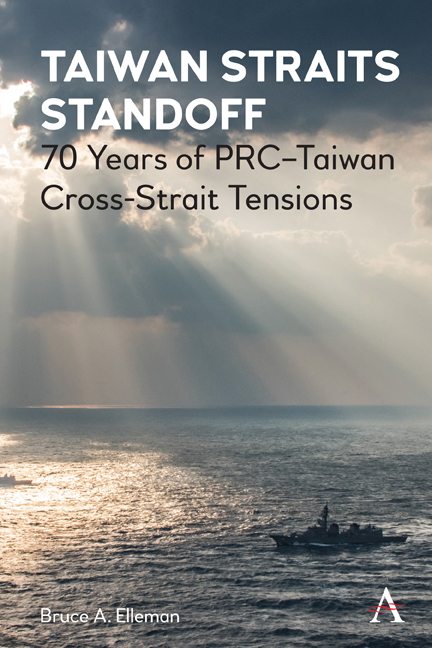Book contents
- Frontmatter
- Dedication
- Contents
- List of Illustrations
- Introduction: Stalemate along the Taiwan Straits, 1949–2020
- 1 The Two Chinas and the Battle for Control of Offshore Islands
- 2 President Harry S. Truman’s Decision to Protect Taiwan
- 3 The First Taiwan Strait Crisis, 1954–55
- 4 The Evacuation of the Dachen Islands, 1955
- 5 The Second Taiwan Strait Crisis, 1958
- 6 The US Threat to Use Atomic Weapons
- 7 Using Taiwan to Undermine the Sino-Soviet Alliance
- 8 Taiwan during the Cold War and Afterward
- Conclusions: The Taiwan Strait’s Strategic Significance Today
- Appendix: Naval Terms and Acronym List
- Selected Bibliography
- Index
2 - President Harry S. Truman’s Decision to Protect Taiwan
- Frontmatter
- Dedication
- Contents
- List of Illustrations
- Introduction: Stalemate along the Taiwan Straits, 1949–2020
- 1 The Two Chinas and the Battle for Control of Offshore Islands
- 2 President Harry S. Truman’s Decision to Protect Taiwan
- 3 The First Taiwan Strait Crisis, 1954–55
- 4 The Evacuation of the Dachen Islands, 1955
- 5 The Second Taiwan Strait Crisis, 1958
- 6 The US Threat to Use Atomic Weapons
- 7 Using Taiwan to Undermine the Sino-Soviet Alliance
- 8 Taiwan during the Cold War and Afterward
- Conclusions: The Taiwan Strait’s Strategic Significance Today
- Appendix: Naval Terms and Acronym List
- Selected Bibliography
- Index
Summary
With the beginning of the Korean War in June 1950, the USN was tasked to create the Taiwan Strait Patrol to neutralize the strait and protect Taiwan from a PRC attack. On August 27, 1950, President Truman wrote to Congressman Warren R. Austin to emphasize that
the action of the United States was an impartial neutralizing action addressed both to the forces on Formosa and to those on the mainland. It was an action designed to keep the peace and was, therefore, in full accord with the spirit of the Charter of the United Nations. As President Truman has solemnly declared, we have no designs on Formosa, and our action was not inspired by any desire to acquire a special position for the United States.
Furthermore, as a result of this US policy “Formosa is now at peace and will remain so until someone resorts to force.”
On September 21, 1950, Secretary of State Dean Acheson addressed a letter to the Secretary General of the United Nations explaining the US government's policy toward Taiwan and certain offshore islands, like the Penghus. He began by citing the December 1, 1943, Cairo declaration stating Formosa would be returned to “Republic of China.” Thereafter, the July 1945 Potsdam declaration confirmed Cairo's terms and in General Order No. 1 the Japanese forces in Formosa were ordered to surrender to “Generalissimo Chiang Kai-shek.” From 1945 onward, the Republic of China retained administrative control over Formosa, the Penghus, plus a number of other offshore islands. On April 28, 1952, Japan signed a peace treaty renouncing its claim to Formosa and the Penghus, although “in whose favor Japan was renouncing was not stipulated.” Thereafter, Japan and the ROC signed their own peace treaty, effective August 5, 1952, where Japan repeated this renunciation, but again without saying which state it was ceding its rights to.
While title over Formosa and the Penghus might be vague, the ROC had occupied these areas continuously since 1945: “There is no question that the Republic of China is today and at all times since the effective date of the Japanese Peace Treaty, has been in effective possession of and exercising administrative control over Formosa and the Pescadores.”
- Type
- Chapter
- Information
- Taiwan Straits Standoff70 Years of PRC–Taiwan Cross-Strait Tensions, pp. 23 - 42Publisher: Anthem PressFirst published in: 2021

